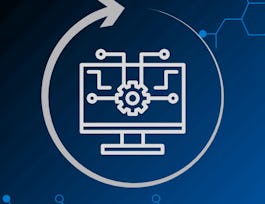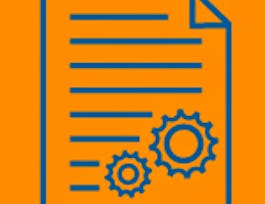Salt is an automation configuration management framework designed on the idea of executing commands remotely. This is open source software developed to automate the configuration of server systems. The course begins with the introduction to Automation with Salt followed by Salt Installation. A brief explanation about features of Salt using command-line tools and Matching Elements is provided in the course. The course also demonstrates the working of Jinja2 and Pillars in a detailed manner.



Empfohlene Erfahrung
Was Sie lernen werden
Install and Configure SaltStack
Demonstrate working of Jinja2 and Pillars
Explore features of Salt using command-line Tools and Matching Elements
Explore working with States and Templating
Kompetenzen, die Sie erwerben
- Kategorie: IaC
- Kategorie: Yet Another Markup Language (YAML)
- Kategorie: Jinja (Template Engine)
- Kategorie: Salt
- Kategorie: Automation
Wichtige Details

Zu Ihrem LinkedIn-Profil hinzufügen
7 Aufgaben
Erfahren Sie, wie Mitarbeiter führender Unternehmen gefragte Kompetenzen erwerben.


Erwerben Sie ein Karrierezertifikat.
Fügen Sie diese Qualifikation zur Ihrem LinkedIn-Profil oder Ihrem Lebenslauf hinzu.
Teilen Sie es in den sozialen Medien und in Ihrer Leistungsbeurteilung.

In diesem Kurs gibt es 2 Module
Welcome to Week 1 of this course .This week, we will be learning about "Introduction to Automation with Salt". We will be installing and configuring SaltStack, an open-source infrastructure automation and management tool. We will explore the features of Salt using command-line tools and learn about matching elements to manage and automate infrastructure more efficiently. By the end of this course, we will have a solid foundation in using Salt for infrastructure automation.
Das ist alles enthalten
15 Videos1 Lektüre3 Aufgaben1 Diskussionsthema
Welcome to Week 2 of this courseThis week, we will be focusing on the advanced aspects of SaltStack automation. We will start by demonstrating the working of Jinja2 and Pillars, which are used for template rendering and data management in SaltStack. We will then explore working with States and Templating to define the desired state of systems and enforce them through automated configuration management. Additionally, we will cover advanced SaltStack topics such as Docker installation and integration to provide a complete end-to-end infrastructure automation solution.
Das ist alles enthalten
11 Videos2 Lektüren4 Aufgaben
Dozent

von
Empfohlen, wenn Sie sich für Software Development interessieren

Coursera Instructor Network

Duke University
Warum entscheiden sich Menschen für Coursera für ihre Karriere?





Neue Karrieremöglichkeiten mit Coursera Plus
Unbegrenzter Zugang zu 10,000+ Weltklasse-Kursen, praktischen Projekten und berufsqualifizierenden Zertifikatsprogrammen - alles in Ihrem Abonnement enthalten
Bringen Sie Ihre Karriere mit einem Online-Abschluss voran.
Erwerben Sie einen Abschluss von erstklassigen Universitäten – 100 % online
Schließen Sie sich mehr als 3.400 Unternehmen in aller Welt an, die sich für Coursera for Business entschieden haben.
Schulen Sie Ihre Mitarbeiter*innen, um sich in der digitalen Wirtschaft zu behaupten.
Häufig gestellte Fragen
This course is ideal for IT Professionals, System Admins, and DevOps Professionals. The target audience for ‘Automation with Salt’ look forward to effectively deploying and managing their infrastructure with Salt.
This course is completely online, so there’s no need to show up to a classroom in person. You can access your lectures, readings, and assignments anytime and anywhere via the web or your mobile device.
If you subscribed, you get a 7-day free trial during which you can cancel at no penalty. After that, we don’t give refunds, but you can cancel your subscription at any time. See our full refund policy.
 enthalten
enthalten


